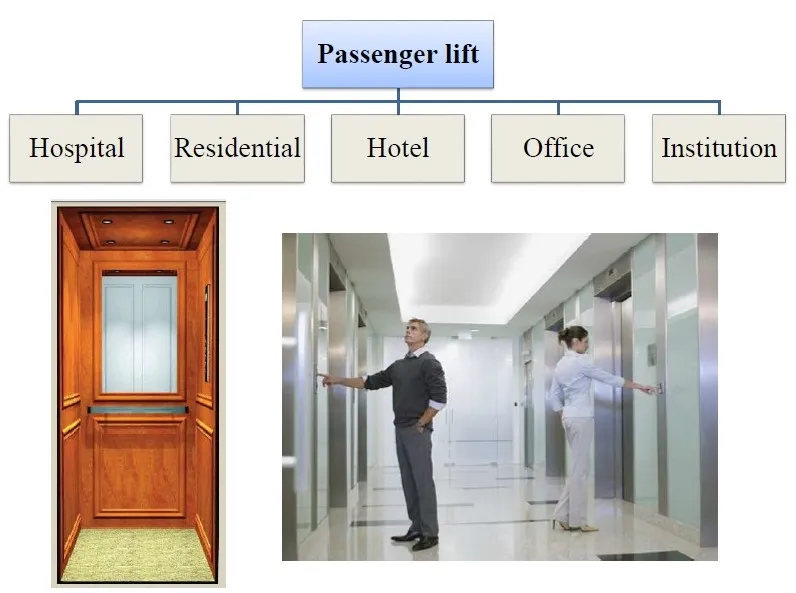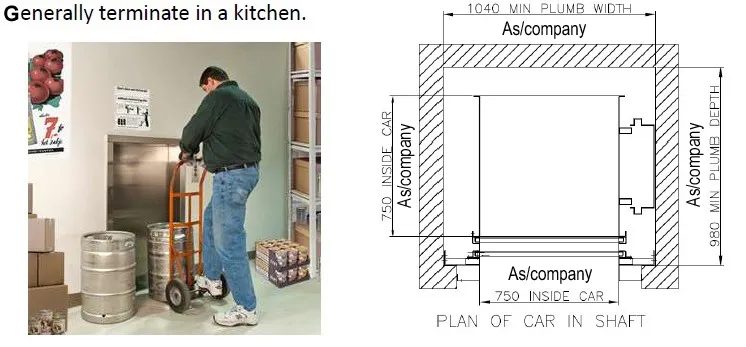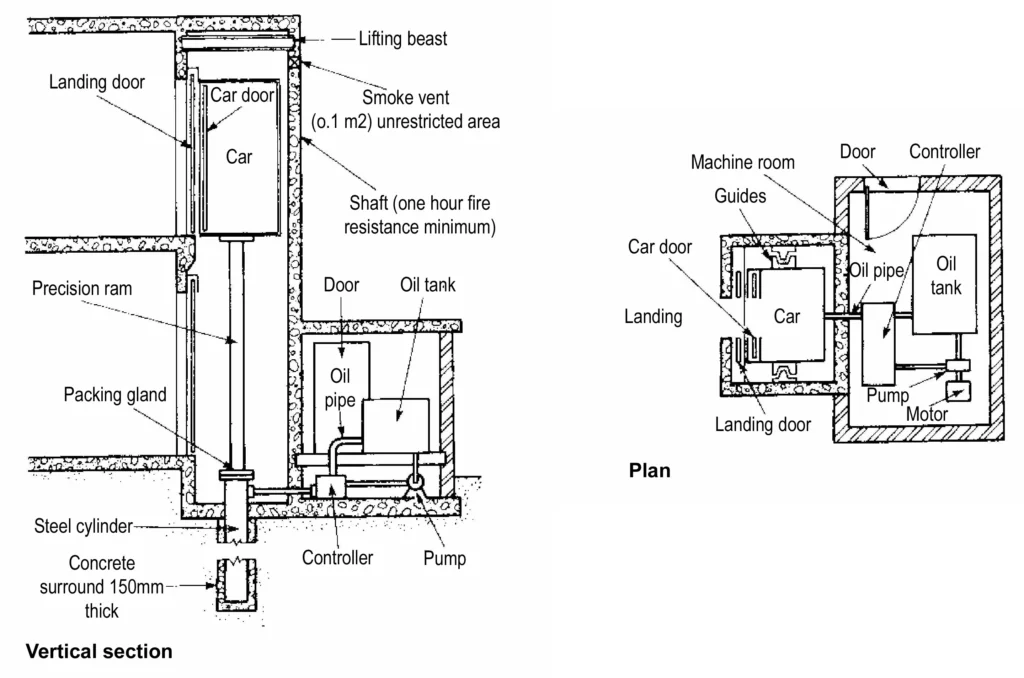If you want to know about the element of design or about the lift and their components or air distribution system, please click the link.
Elevators are devices that move people and goods vertically within a dedicated shaft that connects the floors of a building.
They became commonplace in the 1850s as steel and iron structural frames allowed taller construction; however, it was Elisha Otis’s safety mechanism that prevented the car from falling that made elevators popular.
In almost all modern multi-floor buildings, elevators are required to provide universal access.
There are various types of lifts used in buildings, construction sites, and other industries. Some of the most common types of lifts are:
1) Types of lifts
- Lifts and elevators have become an essential part of everyday life, particularly for those who work or live in high-rise buildings.
- There are many different types of lift which can be used in different applications, serving different purposes.
i) Passenger lifts
These are the most commonly used lifts in buildings and are designed to carry people from one floor to another.

- These are the main means of transportation installed in high-rise buildings, hospitals, offices, commercial complex, apartments, hotels etc.
- In these lifts generally the centre opening doors are recommended.
- These are categorised into various types depending on the load carrying capacity and the rated speed.
ii) Freight (goods) lifts
These are lifts that are used for carrying goods and heavy loads from one floor to another. They are commonly used in industrial and commercial settings.

- These are the lifts for the use of vertical transportation materials & goods.
- Goods lifts with speed of 0.25 to 1m/s are available in loads varying from 500 kg to 5000kg.
- The more the capacity the lesser is the speed recommended.
- For the installation of such lifts the following factors should be considered.
- Size and weight of materials to be transported.
- The method of handling.
- The building characteristics.
iii) Hospital lifts
These lifts are designed to help healthcare providers or caregivers to transfer patients from one surface to another, such as from a bed to a wheelchair. They can be manual or electric, and they come in various styles, such as ceiling-mounted, mobile, or sit-to-stand.

- These the necessity in hospitals, nursing homes & polyclinics as they carry stretcher and other bulky hospital equipment easily from one floor to another.
- Speed of 0.5 m/s is recommended for small hospital. 1m/s may be desirable for in long travel cases and even up to 1.5 m/s in case high rise hospitals.
- Two speed sliding doors are recommended with automatic closing/opening device and micro levelling.
- The lift shaft shall be situated as near as possible to wards and operation theatre for which they are meant.
iv) Service lifts (Dumb waiters)
These are small lifts that are used to transport food, documents, and other small items from one floor to another.

- These is slow speed mini lift to handle only material for vertical transportation from 100 to 250 kg with speed varying from 0.25 to 0.5 m/s.
- The control system depends upon the number of floors to be served.
- There can be two types of control system, the call and send and multi-button controls systems.
v) Capsule lifts

- These are placed in places where elevator has to be installed for elevation and for observation purpose.
vi) Hydraulic lifts
These lifts use hydraulic power to move the lift platform up and down. They are commonly used in automotive shops and industrial settings.

- In these types of lifts the motion is obtained from liquid under pressure.
- It may use water or oil.
- Features – Given below.
- it does not require a machine room, even 50 sq. ft. area can suffice.
- The lift is ideal in low rise buildings where moderate speed and smooth acceleration is preferred. Speed ranges from 0.1m/s to 1 m/s and max. travel is limited to 12m.
- It is most preferred solution in old buildings where no provision is taken for lifts.
These are just a few more examples of the many different types of lifts that exist. Each type of lift has unique features, benefits, and limitations, depending on the industry, the application, and the environment where they are used.
It’s great that you talked about how there are various types of lifts used in buildings, construction sites, and other industries. I was watching a video of a factory last night and I saw that they used a lift for their operations. I heard industrial material floor lifts are widely available now, which definitely sounds interesting for businesses.